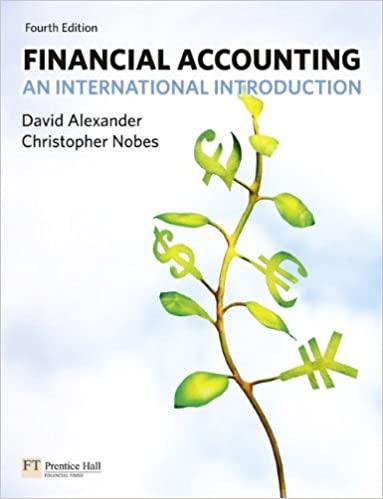On January 1, 2017, Concord Corporation had these stockholders equity accounts.
| Common Stock ($ 10 par value, 75,500 shares issued and outstanding) | | $ 755,000 |
| Paid-in Capital in Excess of Par Value | | 484,500 |
| Retained Earnings | | 685,000 |
During the year, the following transactions occurred.
| Jan. | 15 | | Declared a $ 0.40 cash dividend per share to stockholders of record on January 31, payable February 15. |
| Feb. | 15 | | Paid the dividend declared in January. |
| Apr. | 15 | | Declared a 10% stock dividend to stockholders of record on April 30, distributable May 15. On April 15, the market price of the stock was $ 14 per share. |
| May | 15 | | Issued the shares for the stock dividend. |
| Dec. | 1 | | Declared a $ 0.60 per share cash dividend to stockholders of record on December 15, payable January 10, 2018. |
| Dec. | 31 | | Determined that net income for the year was $ 413,000. Enter the beginning balances and post the entries to the stockholders equity T-accounts. (Post entries in the order of journal entries posted in the previous part. For accounts that have zero ending balance, the entry should be the balance date and zero for the amount.) | Common Stock | | choose a transaction datechoose a transaction date 1/1 Bal.1/154/155/1512/112/3112/31 Bal. | enter a debit amount | choose a transaction datechoose a transaction date 1/1 Bal.1/154/155/1512/112/3112/31 Bal. | enter a credit amount | | choose a transaction datechoose a transaction date 1/1 Bal.1/154/155/1512/112/3112/31 Bal. | enter a debit amount | choose a transaction datechoose a transaction date 1/1 Bal.1/154/155/1512/112/3112/31 Bal. | enter a credit amount | | choose the end date of the accounting periodchoose the end date of the accounting period 1/1 Bal.1/154/155/1512/112/3112/31 Bal. | enter a debit balance | choose the end date of the accounting periodchoose the end date of the accounting period 1/1 Bal.1/154/155/1512/112/3112/31 Bal. | enter a credit balance | | Retained Earnings | | choose a transaction datechoose a transaction date 1/1 Bal.1/154/155/1512/112/3112/31 Bal. | enter a debit amount | choose a transaction datechoose a transaction date 1/1 Bal.1/154/155/1512/112/3112/31 Bal. | enter a credit amount | | choose a transaction datechoose a transaction date 1/1 Bal.1/154/155/1512/112/3112/31 Bal. | enter a debit amount | choose a transaction datechoose a transaction date 1/1 Bal.1/154/155/1512/112/3112/31 Bal. | enter a credit amount | | choose the end date of the accounting periodchoose the end date of the accounting period 1/1 Bal.1/154/155/1512/112/3112/31 Bal. | enter a debit balance | choose the end date of the accounting periodchoose the end date of the accounting period 1/1 Bal.1/154/155/1512/112/3112/31 Bal. | enter a credit balance | | Paid-in Capital in Excess of Par Value | | choose a transaction datechoose a transaction date 1/1 Bal.1/154/155/1512/112/3112/31 Bal. | enter a debit amount | choose a transaction datechoose a transaction date 1/1 Bal.1/154/155/1512/112/3112/31 Bal. | enter a credit amount | | choose a transaction datechoose a transaction date 1/1 Bal.1/154/155/1512/112/3112/31 Bal. | enter a debit amount | choose a transaction datechoose a transaction date 1/1 Bal.1/154/155/1512/112/3112/31 Bal. | enter a credit amount | | choose the end date of the accounting periodchoose the end date of the accounting period 1/1 Bal.1/154/155/1512/112/3112/31 Bal. | enter a debit balance | choose the end date of the accounting periodchoose the end date of the accounting period 1/1 Bal.1/154/155/1512/112/3112/31 Bal. | enter a credit balance | | Cash Dividends | | choose a transaction datechoose a transaction date 1/1 Bal.1/154/155/1512/112/3112/31 Bal. | enter a debit amount | choose a transaction datechoose a transaction date 1/1 Bal.1/154/155/1512/112/3112/31 Bal. | enter a credit amount | | choose a transaction datechoose a transaction date 1/1 Bal.1/154/155/1512/112/3112/31 Bal. | enter a debit amount | choose a transaction datechoose a transaction date 1/1 Bal.1/154/155/1512/112/3112/31 Bal. | enter a credit amount | | choose the end date of the accounting periodchoose the end date of the accounting period 1/1 Bal.1/154/155/1512/112/3112/31 Bal. | enter a debit balance | choose the end date of the accounting periodchoose the end date of the accounting period 1/1 Bal.1/154/155/1512/112/3112/31 Bal. | enter a credit balance | | Common Stock Dividends Distributable | | choose a transaction datechoose a transaction date 1/1 Bal.1/154/155/1512/112/3112/31 Bal. | enter a debit amount | choose a transaction datechoose a transaction date 1/1 Bal.1/154/155/1512/112/3112/31 Bal. | enter a credit amount | | choose the end date of the accounting periodchoose the end date of the accounting period 1/1 Bal.1/154/155/1512/112/3112/31 Bal. | enter a debit balance | choose the end date of the accounting periodchoose the end date of the accounting period 1/1 Bal.1/154/155/1512/112/3112/31 Bal. | enter a credit balance | | Stock Dividends | | choose a transaction datechoose a transaction date 1/1 Bal.1/154/155/1512/112/3112/31 Bal. | enter a debit amount | choose a transaction datechoose a transaction date 1/1 Bal.1/154/155/1512/112/3112/31 Bal. | enter a credit amount | | choose the end date of the accounting periodchoose the end date of the accounting period 1/1 Bal.1/154/155/1512/112/3112/31 Bal. | enter a debit balance | choose the end date of the accounting periodchoose the end date of the accounting period 1/1 Bal.1/154/155/1512/112/3112/31 Bal. | enter a credit balance | |






